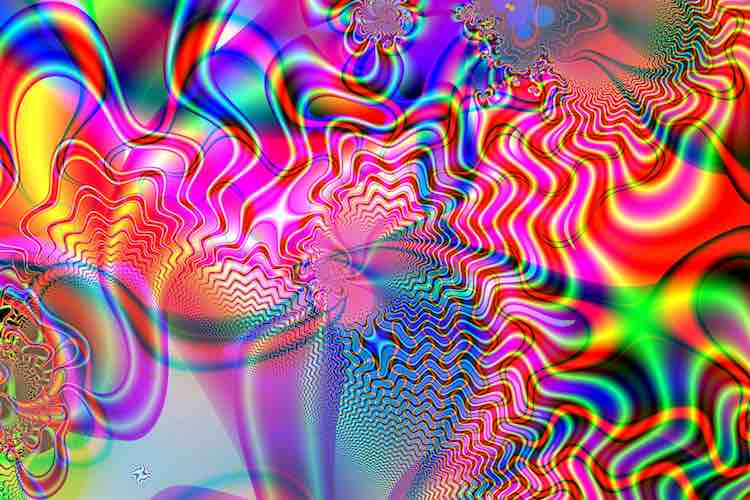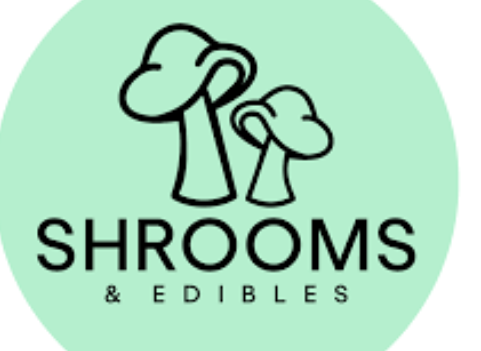What is it?
Types of hallucinogens: LSD, mescaline, psilocybin, PCP, cannabis, ecstasy, ketamine, salvia and others.
The term hallucinogen refers to many different drugs, which are often called “psychedelic” drugs. While the effects of these drugs vary widely, all change the way people see, hear, taste, smell or feel, and affect mood and thought. At high doses, all may cause a person to hallucinate, or see, hear or feel things that aren’t really there.
Most of the hallucinogens used in North America belong to one of these six categories:
- indolealkylamines, which includes LSD (d-lysergic acid diethlyamide, a semi-synthetic substance originally derived from “ergot,” a fungus that grows on rye and other grains), LSA (d-lysergic amide, from morning glory seeds), psilocybin and psilocin (from Psilocybe mushrooms) and DMT (dimethyltryptamine, from the bark of the Virola tree, and other sources)
- phenylethylamines, which includes mescaline (found in peyote cactus), and “designer drugs” such as:
- MDA (methylenedioxyamphetamine)
- MDMA (ecstasy, 3,4-methylenedioxymethamphetamine)
- PMA (paramethoxyamphetamine)
- 2-CB (4-bromo-2,5-dimethoxyphenethylamine)
- STP (2,5-dimethoxy-4-methylamphetamine)
- TMA (trimethoxyamphetamine).
- arylcycloalkylamines, such as PCP (phencyclidine) and ketamine
- cannabinoids, especially THC (tetrahydrocannabinol), found in marijuana, hash and hash oil
- anticholinergics, from the plant family Solanaceae, which includes deadly nightshade (Atropa belladonna) and jimsonweed (Datura stramonium)
- the diterpene, salvinorin-A, from the plant Salvia divinorum.Magic Mushrooms
Where does it come from?
Some hallucinogens come from mushrooms (psilocybin), cacti (mescaline) and other plants (cannabis, salvia). Of these, cannabis and psilocybin are almost always used in their natural form. Although LSD is used only in a synthesized form, a related drug, LSA, is found in nature. Other hallucinogens, such as MDMA and ketamine, are created in laboratories.
Who uses it?
Hallucinogens have been used since ancient times in religion, medicine, magic and prophecy. In the 1960s and 70s, hallucinogen use became a symbol of the counter-culture among young people in North America and Europe. In the 1990s, hallucinogen use was linked to the “rave” scene.
A 2007 survey of Ontario students in grades 7 to 12 reported that:
- 3.5 per cent had used ecstasy at least once in the past year
- 1.6 per cent had used LSD at least once in the past year
- 0.7 per cent had used PCP at least once in the past year
- 5.5 per cent had used other hallucinogens (such as psilocybin and mescaline) at least once in the past year.
A 2004 survey of Canadians (aged 15+) reported that:
- 4.1 per cent had used ecstasy and 11.4 per cent had used LSD, PCP or other hallucinogens at least once in their lifetime
- 1.1 per cent had used ecstasy and 0.7 per cent had used LSD, PCP or other hallucinogens at least once in the past year.
How does it make you feel?
How hallucinogens make you feel depends on:
- how much you use
- how often and how long you use
- your mood, expectation and environment
- your age
- whether you have certain pre-existing medical or psychiatric conditions
- whether you’ve taken any alcohol or other drugs (illegal, prescription, over-the-counter or herbal).
Hallucinogens cause mostly psychoactive, or mind-altering, effects, which can be mild to intense. These effects vary from drug to drug, from person to person, from one drug-taking episode to the next, and can even change dramatically within one time of use. Effects can range from ecstasy to terror, from mild distortion of the senses to full hallucinations (where people believe that drug-induced visions or other perceptions are real).
Different types of hallucinogens produce different effects; for example:
LSD produces a kaleidoscope of visual patterns and changes perception. People who take LSD usually know that the hallucinations are not real; however, the effects can appear real.
Ecstasy enhances mood and produces feelings of empathy and intimacy.
Ketamine causes an out-of-body feeling, which may be pleasant or terrifying.
Salvia causes intense, short-lived hallucinogenic effects, such as smelling sounds or hearing colours.
How long does the feeling last?
The effects of some hallucinogens, such as LSD, last for hours, while others, such as salvia, last only a short time.
Is it addictive?
Most people who use hallucinogens do so occasionally. Repeated use of hallucinogens such as LSD or ecstasy leads to tolerance, where the drug has reduced or no effect. Sensitivity to the drug returns if the person stops using it for a period of time, and then starts again. Stopping use of hallucinogens does not usually cause symptoms of withdrawal. However, people can develop psychological dependence, in which they feel they need the drug.Magic Mushrooms
Is it dangerous?
Most of these drugs are illegal and unregulated, and may include toxins, or not even contain the drug they are sold as. For example, drugs sold as ecstasy are usually not pure MDMA, and have been found to contain other drugs, such as methamphetamine. Drugs sold as mescaline are almost always something else.
Hallucinogens affect perception and behaviour. Taking them may cause people to become disoriented, have poor judgment and take risks.
Many hallucinogens can have very unpleasant or toxic effects (e.g., jimsonweed, deadly nightshade). Hallucinogenic plants can be mistaken for other toxic or lethal plants, for example, mushrooms.
Although research is scarce, taking hallucinogens during pregnancy may affect the development of the baby, and increase the chance of miscarriage.
What are the long-term effects of using it?
Hallucinogen use may, on rare occasions, result in “flashbacks,” or replays of the drug experience, days, weeks or even years after the drug was taken. Some people who take hallucinogens feel depressed or anxious long after they took the drug.
Hallucinogens: what are the effects?

The effects of any drug (including hallucinogens) vary from person to person. How hallucinogens affect a person depends on many things, including their size, weight and health, also whether the person is used to taking it and whether other drugs are taken around the same time.
The effects of any drug also depend on the amount taken. This can be very hard to judge as the quality and strength of illicit drugs can vary greatly from one batch to another.
There is no safe level of drug use. Use of any drug always carries some risk – even medications can produce unwanted side effects. It is important to be careful when taking any type of drug.
Immediate effects
The effects of hallucinogens can last several hours and vary considerably, depending on the specific type of hallucinogen. Some of the typical effects of hallucinogens are:
- feelings of euphoria;
- blurred vision;
- sense of relaxation and well-being;
- hallucinations and distorted perception, including visual, auditory, body, time and space;
- disorganised thoughts, confusion and difficulty concentrating, thinking or maintaining attention;
- anxiety, agitation, paranoia and feelings of panic;
- dizziness;
- blurred vision;
- loss of coordination;
- increased breathing rate;
- increased heart rate and blood pressure;
- irregular heartbeat, palpitations;
- nausea and vomiting;
- increased body temperature and sweating, may alternate with chills and shivering;
- numbness.

